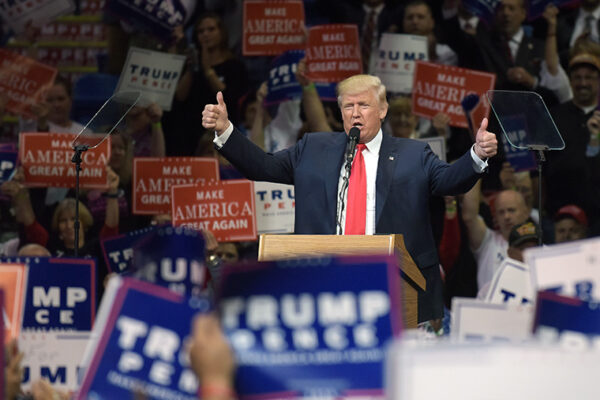President-elect Donald J. Trump has nominated a number of controversial figures to prominent positions in his Cabinet. Instead of going through the usual course of Senate approval, he may use a constitutional power called recess appointments to bypass the Senate entirely and move his nominees through quickly.

Andrea Katz, an associate professor of law at Washington University in St. Louis, is an expert on constitutional law, with a focus on presidential power. Here, she discusses how Cabinet members are traditionally appointed and whether the Senate or the Supreme Court could stop Trump from doing an end-around on tradition.
What is the traditional process for Senate approval of Cabinet appointments?
According to the U.S. Constitution (Art. 2, §2), all Cabinet officers, after being chosen by the president, must be confirmed by the Senate. Traditionally, this means that the Senate will vet the president’s picks. This can involve a lengthy vetting process of the nominee’s qualifications and experience, and sometimes includes hearings for questioning the nominee.
However, it’s extremely rare for the Senate to reject a Cabinet nominee: only 25 candidates have ever been put forward to the Senate and failed to be confirmed, whether because they had withdrawn or were rejected. Of those, three were during Trump’s first term.
What is role of that process?
Senate approval of presidential nominees was designed to be a check on the president’s appointment power and to make sure good people were selected to important posts in our government. According to Alexander Hamilton, the Senate’s participation was supposed to be a check on “a spirit of favoritism in the president” and to “prevent the appointment of unfit characters.”
Vetting people in front of the American public was less important in the early republic, when there was vastly less information available to the public and less attention paid to the process, than today. But it’s true that the confirmation process provides an opportunity for the public to learn more about the nominees and their views on important issues.
Trump has proposed bypassing the approval process. Has that happened recently?
The Constitution’s Recess Appointment Clause affords the president the ability to temporarily fill vacancies while the Senate is in recess, and these appointees may stay in the role until the end of the following legislative session. With the difficulties of 18th-century travel, the Recess Appointment Clause was designed to allow the president to keep the government running when the Senate was not meeting, which, in those days, was often.
Here’s where it gets tricky. Recess appointments have been used by recent presidents — Presidents George W. Bush and William J. Clinton both made over 100 — although generally to fill positions below the Cabinet level. With the elimination in 2013 of the 60-vote threshold for nominees, which made it easier for the majority to confirm appointments, recess appointments haven’t been used in over a decade.
At any rate, no president has ever done what Trump has, which is to try, prior to being inaugurated, to badger his party into voluntarily calling a recess so that he can appoint his choices without the Senate. In a Truth Social post on Nov. 10, Trump wrote: “Any Republican Senator seeking the coveted LEADERSHIP position in the United States Senate must agree to Recess Appointments (in the Senate!), without which we will not be able to get people confirmed in a timely manner.” This would be an unprecedented use of the president’s influence over his party, and an example of what scholars have called “constitutional hardball.”
Is any system in place to force him to go through Senate approval?
There are two controls here: one is Congress, the other the Supreme Court. Neither would necessarily stop this plan.
Start with Congress. Under the Constitution, both chambers have to agree to a recess that lasts three days or more. Incoming Republican Senate Majority Leader John Thune and House Speaker Mike Johnson have both left the door open to recess appointments, although they acknowledge that Senate confirmation is preferable.
If, say, the House voted to adjourn and the Senate refused, the Constitution outlines that a president may adjourn Congress in the case of “disagreement between them, with respect to the time of adjournment.” So, theoretically, Trump could weigh in and declare Congress in recess. If so, this act would certainly be challenged in court.
There are indications that the Supreme Court might not take kindly to such an unprecedented approach. In 2014, the court sided with challengers to a handful of Obama recess appointments, giving the Senate more authority to block the maneuver and determining that the chamber must be away for 10 days for recess appointments to occur. Further, what constitutes a disagreement between the chambers “with respect to the time of adjournment” is wide open for interpretation, and might, in the justices’ view, not cover a situation like this.
Generally, it’s possible — although not guaranteed — that the court would look uncharitably toward the idea of the president and his party, as one expert puts it, “conspiring to end run the Senate on nominations.” The idea threatens to turn the appointment process for Cabinet officers on its head, and to give the president a potent source of power to singlehandedly fill government posts when his party holds a majority in Congress.


